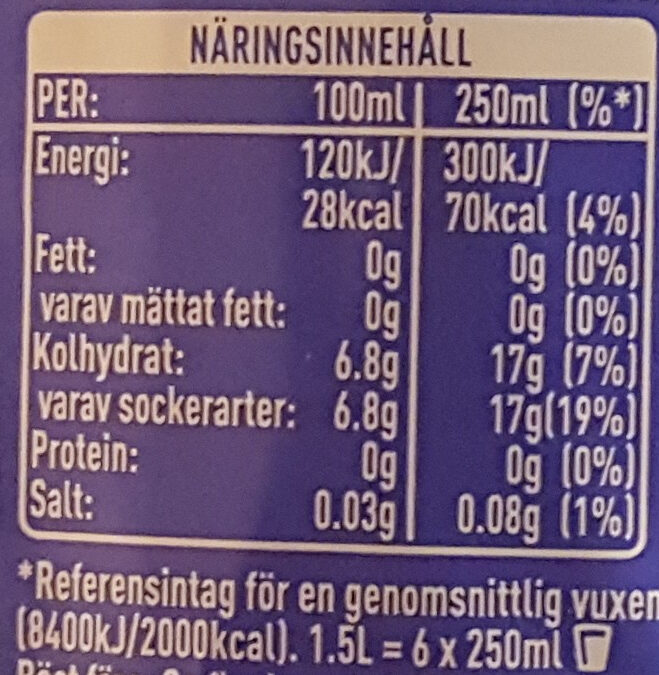Fanta Shokata Lemon & Elderflower - 1.5 l
This product page is not complete. You can help to complete it by editing it and adding more data from the photos we have, or by taking more photos using the app for Android or iPhone/iPad. Thank you!
×
Streckkod: 5000112636086 (EAN / EAN-13)
Vanligt namn: Kolsyrad läskedryck med citron- och fläderblomssmak, med socker och sötningsmedel.
Kvantitet: 1.5 l
Förpackning: Plast, en:pet-polyethylene-terephthalate
Varumärken: Fanta
Kategorier: Växtbaserad mat och dryck, Drycker, Växtbaserade drycker, Kolsyrade Drycker, Fruktbaserade drycker, en:Artificially sweetened beverages, Läsk, en:Fruit sodas, en:Sweetened beverages
Tillverknings eller bearbetningsplats: Sweden, Sverige
Butiker: Coop
Länder där såld: Sverige
Matching with your preferences
Miljö
Förpackning
Transportation
Report a problem
Datakällor
Produkt tillagd den av akitainu
Senast ändrad produktsida på av packbot.
Produktsida också redigerad av jumati, openfoodfacts-contributors, roboto-app.










